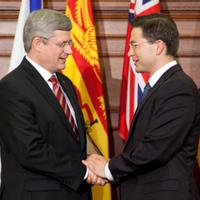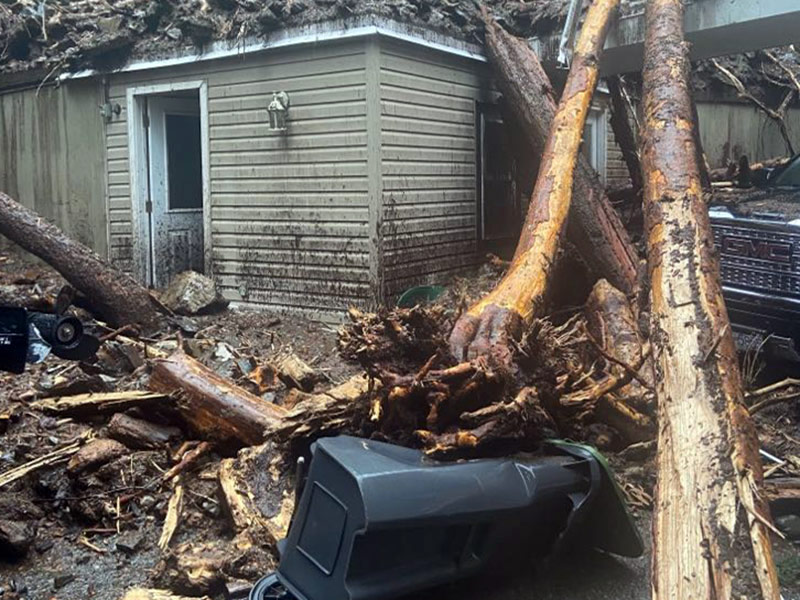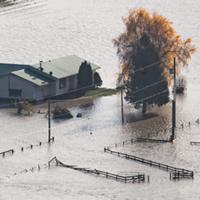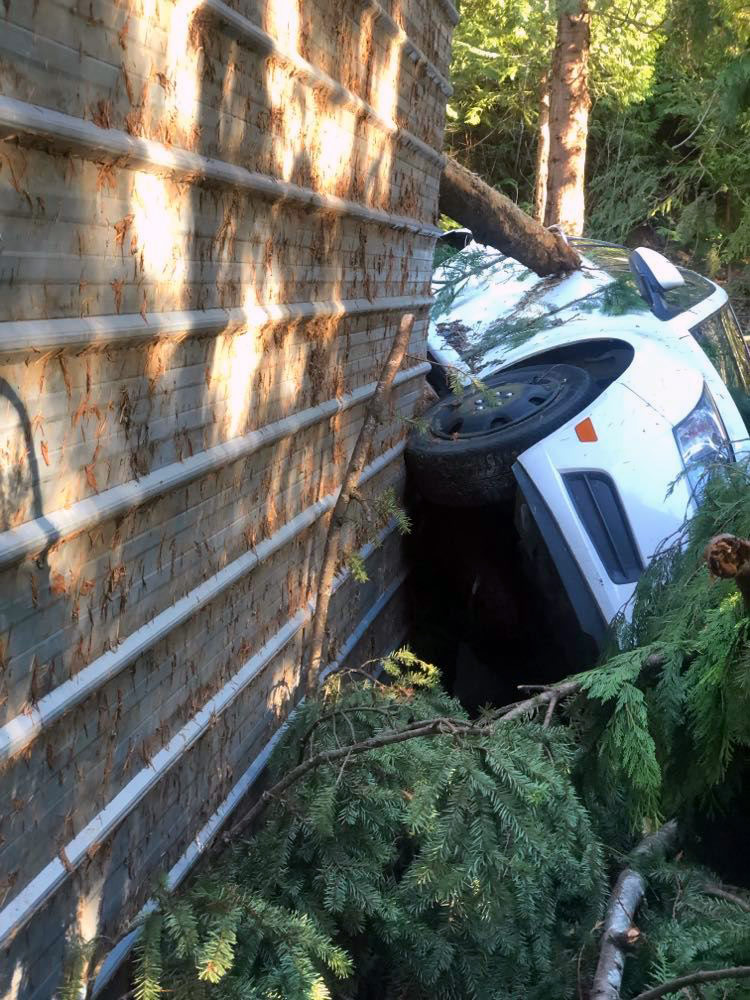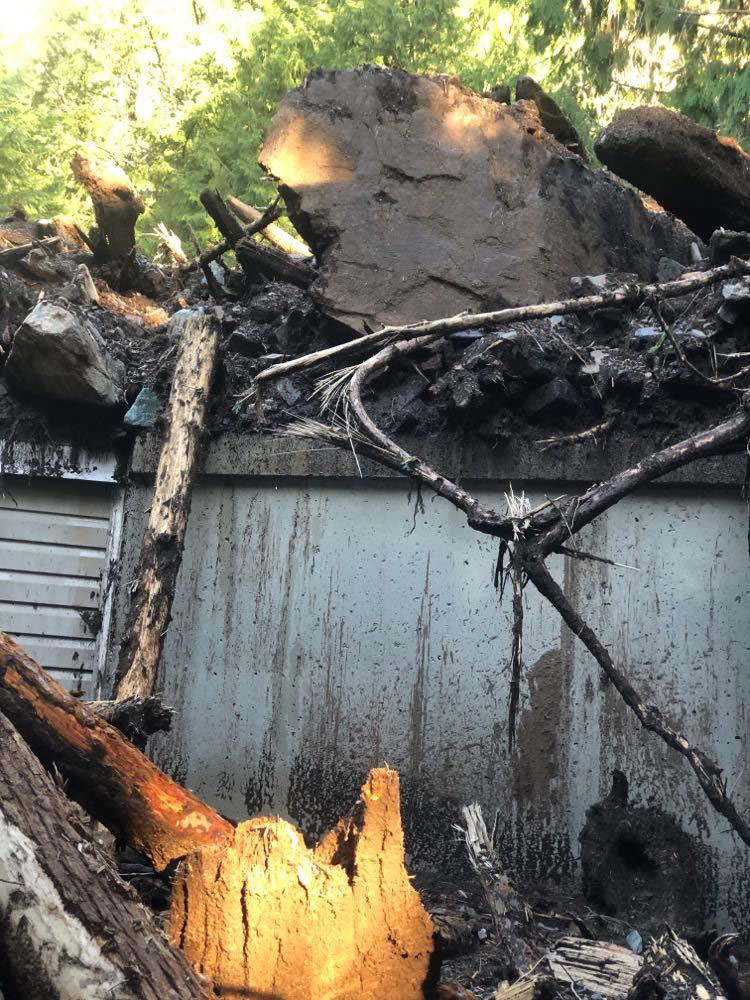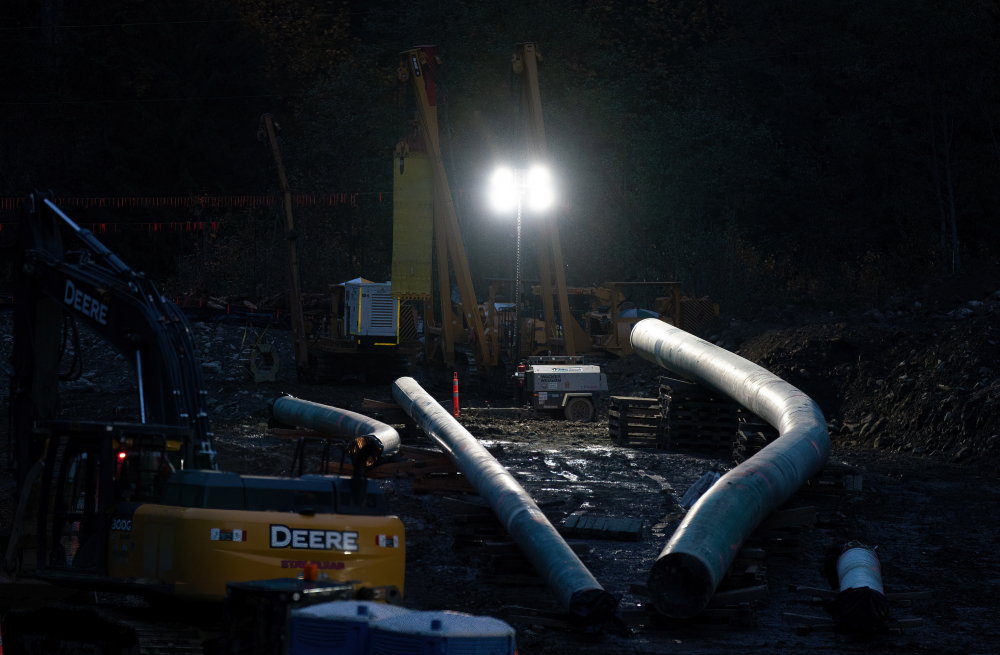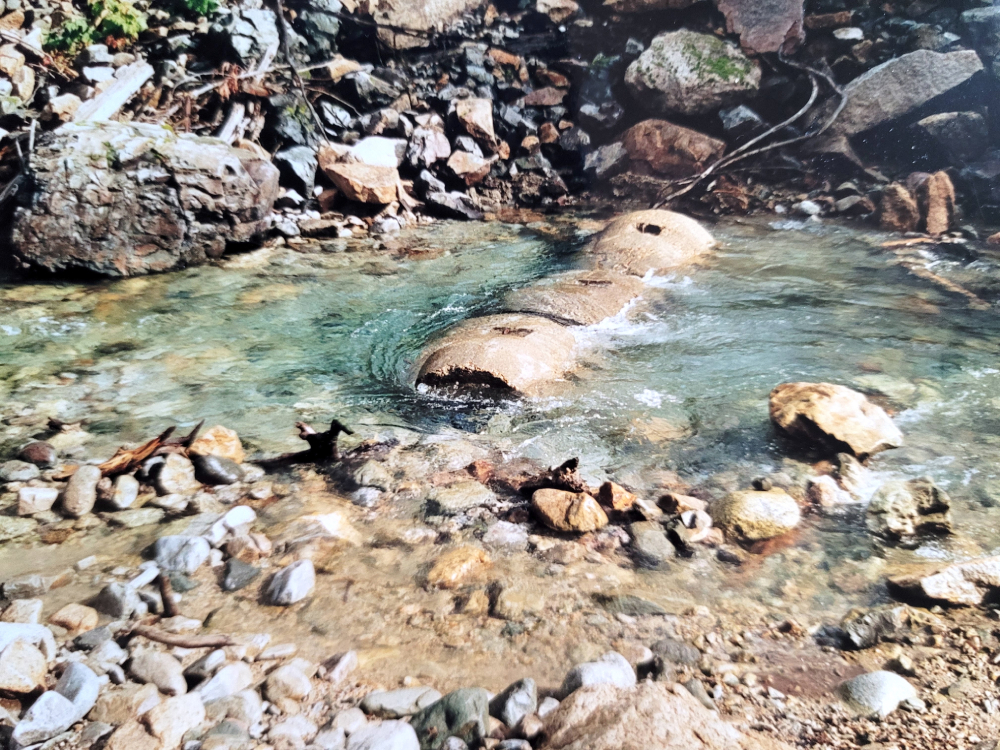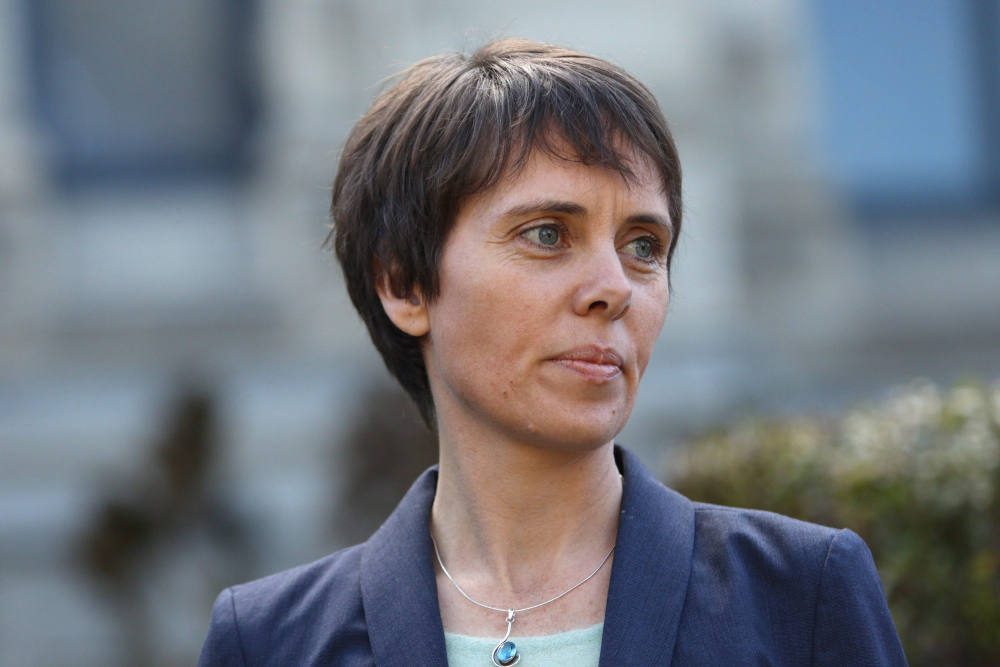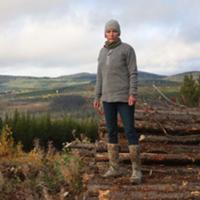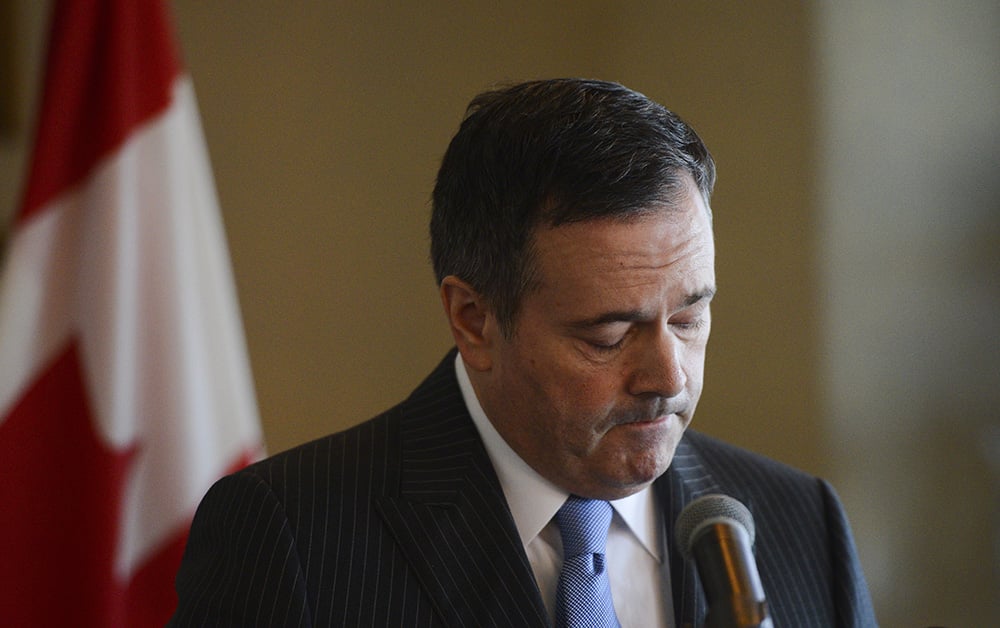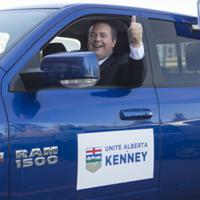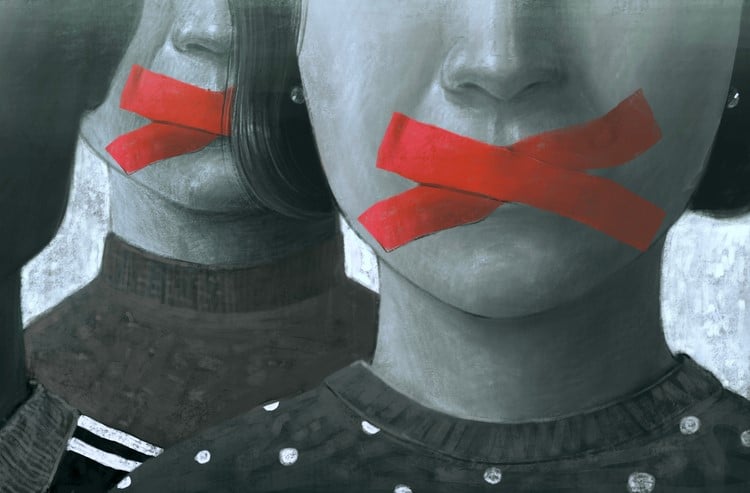Saying ‘no fares’ could make public transit better and streets safer, while speeding up climate and justice progress. Who’s on board?
andrea bennett Today | TheTyee.ca
andrea bennett is an editor with The Tyee and the author of Like a Boy but Not a Boy, a CBC Books’ pick for the top Canadian non-fiction of the year and one of Autostraddle’s best queer books of 2020.
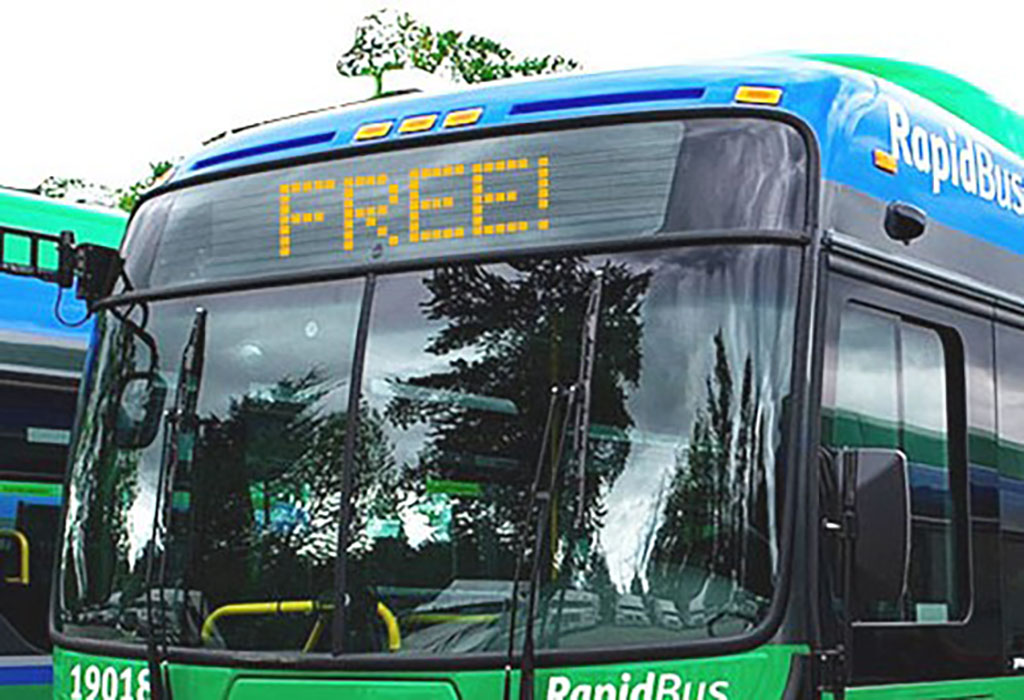
In May 2019, Winnipeg public transit drivers held a fare strike. Members of ATU Local 1505 had been working without a contract since that January, and they decided to make a point. On a Monday, they left leaflets at bus stops and advertised the strike on social media. That Tuesday they let people ride for free.
The fare strike created a new and “visceral experience” for public transit users, says James Wilt, author of Do Androids Dream of Electric Cars?. “Even just the ease of getting on board and not having to rummage for change. The feeling of being able to get on and off the bus at any point.”
So: what if transit was always free of charge? What if it was fully accessible? What if it properly served rural, remote and suburban riders? What if we had free, public, intercity transit, making it possible to get from Nelson to Victoria without owning a car? Would the benefits of all that be worth shifting the cost completely from riders to the public purse?
In 2007, Dave Olsen wrote a Tyee reader-funded series called “No Fares!”. Among the reasons he gave for not charging riders: offering “a barrier-free transportation option to every member of the community,” making service faster and more efficient, and ending the criminalization of citizens who for whatever reason duck paying fares. And he found other places in our region and the world already experimenting with letting people ride free.
Over a decade later, everything Olsen wrote is still true — free transit is a poverty justice issue, a disability justice issue and a racial justice issue. It’s also a climate issue — well-functioning, affordable transit empowers more people to shift from relying on private, polluting vehicles to get around.
And global fare-free experiments are gathering size and speed. Kansas City eliminated fares for all bus and light rail riders in 2019. Last year Luxembourg became the first country to make public transit — buses, trams and trains — free nationwide. Malta is set to be next and Germany is giving it a serious look.
Which is why it was time to revisit a cluster of questions related to making public transit fare-free in British Columbia. Interested? Hop in and ride along.
Why free for everyone?
While programs exist to make transit more affordable, these programs provide imperfect solutions. Winnipeg, for example, recently began to offer a low-income monthly bus pass for $62.40. But the cost was still too steep. Only 1,017 people applied for the low-income pass the first year it was launched — “about 15 per cent of the predicted demand,” according to the Winnipeg Free Press.
Heather McCain, the executive director of Creating Accessible Neighbourhoods and a former member of the Access Transit Users’ Advisory Committee, says recent changes to the B.C. bus pass program, which used to make bus passes available for $45 per year to British Columbians on income support for disability, have made it more difficult for these transit users to access passes.
“Within the last five years, it was changed to where it’s $45 a year for the administration fee, and now $52 per month for the pass,” McCain told The Tyee.
“The province did give us this transportation subsidy, which was meant to cover the cost of the bus pass,” they add. “But that’s not how poverty works. People don’t use it for transportation because they need medication more or they need therapy more, or they need clothing for their children more.”
B.C. provides up to $1,358.50 per month to a single person on disability assistance. This falls far short of the $2,000 a month the federal government provided as the Canada Emergency Response Benefit, commonly referred to as CERB, for workers affected by COVID.
Keeping disabled people in poverty, McCain says, effectively removes the “choice” offered by the current transit subsidy program.
Moreover, McCain adds, getting on disability support in the first place presents another barrier. Many people are rejected on their first try and may not have the energy, time or wherewithal to reapply, even if they are eligible.
This is part of the reason McCain joined the #AllOnBoard campaign, which advocates for affordable and accessible transit across the province.
“While I think that disabled people who are in poverty should have free transit,” McCain adds, “I also think immigrants who are in poverty should have free transit, and unhoused people should have free transit.”
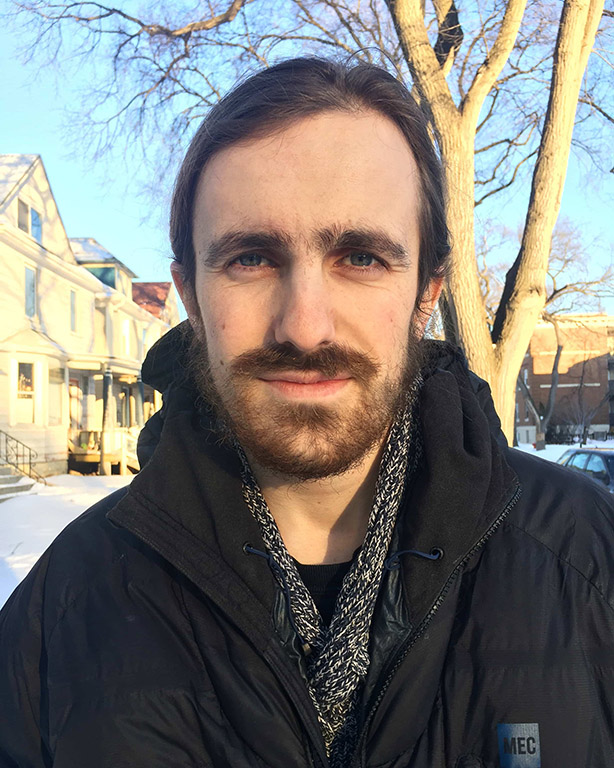
Wilt points out that free transit is a racial justice issue, too — transit and fare enforcement disproportionately affects Black and Indigenous people. An independent review of 121,819 TTC fare enforcement incidents spanning a decade in Toronto, for example, found that Black and Indigenous riders were both more likely to be involved in fare enforcement incidents, and faced harsher consequences resulting from these incidents.
In some horrific cases, fare enforcement incidents have even led to the deaths of transit riders.
But how would we pay for it?
The same way we pay for roads and other public infrastructure: gathering taxes and investing that money in a social good. Offloading the costs from riders to the public purse also could change the tendency of transit to become progressively worse.
Most public transit is set up to collect somewhere between one third to two thirds of its revenue from fares, Wilt says. He points to several examples in his book where budgetary shortfalls have led to worsening service, leading to fewer regular riders — a “vicious cycle” where transit becomes less and less viable as a transportation option.
“Over time, as transit service becomes less reliable, less affordable and even just less dignified,” he says, “people will often, if they can afford to, move away to other modes of transportation, including private automobiles, ride hailing services, cabs and sometimes bikes and being a pedestrian.”
As ridership falls further, the budget crunch gets worse, and so does service.
In contrast, Wilt points to the idea of a “virtuous cycle”: when transit is well-funded and can be relied on to get people where they need to go on time, conveniently and affordably, ridership goes up. This has been the case in Vancouver, Seattle, Phoenix and Montreal.
Increasing access for people of all income levels could mean introducing sliding-scale bus passes where costs are tied to income level. But means testing tends to bog people down in bureaucracy and paperwork, and presents particular challenges for English language learners and anyone who struggles with literacy issues.
Free transit for everyone, by contrast, would ensure access for everyone without bureaucratic hoops and hassles.
So how much would that cost the government?
Public transit is already subsidized, of course. In Metro Vancouver, for example, TransLink’s forecasted expenditures for 2021 total over $1.95 billion, over $400 million of which comes from fares. In previous years, this amount was higher — TransLink expected to receive $700 million in fares in 2020 before COVID hit.
Removing fares would require drumming up revenue from other sources — taxation, or funding from the province or federal government, or both.
But as Olsen wrote in 2007, we wouldn’t need to replace the entire amount — the transit police expenditure for 2021 is forecasted at $44 million per year, and eliminating the need to enforce collect fares and police fare evasion could significantly reduce that budget line. And traffic congestion is estimated to cost somewhere between $500 million and $1.2 billion in Metro Vancouver; if the majority of people who drive were able to switch to taking transit, it’s possible the switch could pay for itself in congestion reduction alone.
But, yeah, $700 million can seem a big number. For reference, though, the province of B.C. spends at least that on fossil fuel subsidies and $700 million is about one per cent of the total provincial budget.
To be clear, what we’ve been discussing is just the operating budget for transit for B.C.’s most populous region. The price tags for building top-of-the-line public transit infrastructure can be eye-popping. The bill for the 5.7 kilometres of underground subway extending the Millennium Line from VCC-Clark to Broadway and Arbutus is currently estimated at $2.83 billion, which, if it’s like most other infrastructure projects, will almost certainly rise.
Still, such infrastructure triggers development that generates new tax revenue, and UBC sees so much benefit to its own future that the university is exploring the prospect of offering financial and land contributions to help make the project happen.
Who is pressing for fare-free transit?
In 2018, a group of organizations, community groups, advocates, unions and other stakeholders, including the BC Poverty Reduction Coalition and Creating Accessible Neighbourhoods, came together to create the #AllOnBoard campaign.
The campaign’s province-wide demands included free transit for all youth 18 and under, an income-based sliding scale fare system for adults, the end of ticketing of minors for fare evasion and the implementation of community service as an alternative to fare evasion fines for low-income adults. #AllOnBoard also wants to see a shift in provincial, regional and municipal transportation planning that would ensure public transportation is affordable, accessible and safe
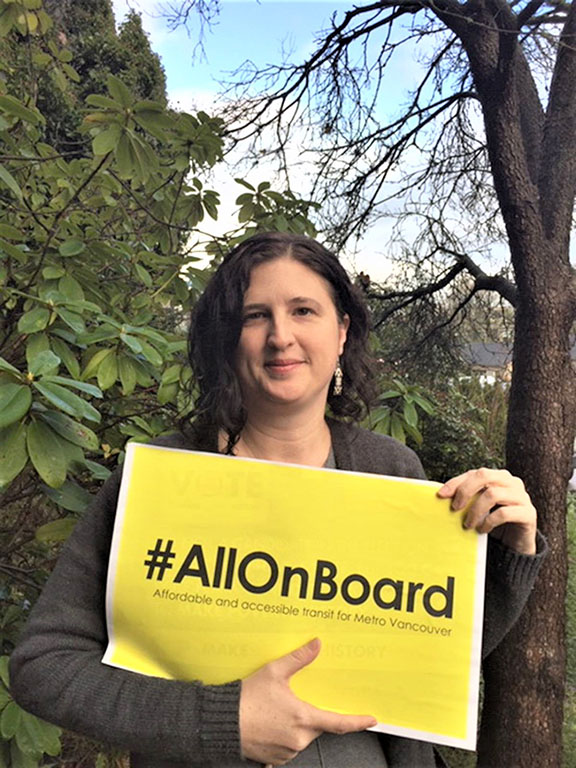
Viveca Ellis, a current provincial organizer with the Single Mothers’ Alliance for Gender & Economic Justice and former community organizer for the BC Poverty Reduction Coalition, says the campaign worked closely and tirelessly with municipalities, city councillors and a variety of other stakeholders to pass advocacy motions supporting campaign demands. This resulted in municipalities sending letters of support to different provincial ministers.
Which in turn resulted in a big win: on Sept. 1, 2021, children 12 and under began to ride public transit for free in municipalities across the province.
TransLink is also reviewing their fare evasion ticketing policy as a result of #AllOnBoard’s advocacy.
Why not run a small experiment and see how fare-free transit goes?
That’s happening. Also in September, Ellis says, the city began an affordable pilot program that will gather data on the impacts of free access to transit for low-income families in Vancouver.
The pilot is offering free transit passes to 100 people and is being administered by four different groups: the Single Mother’s Alliance, South Vancouver Neighbourhood House, Urban Native Youth Association and Eastside Works.
Ellis and the SMA are administering the passes for 30 participants. Their group chose to give transit passes to each member of a household; Ellis says many of the multigenerational family households she’s worked with have often been able to afford a single shared transit pass, if they’re able to afford one at all.
“So one day, mom gets on the bus, but the next day she doesn’t, and then her teen is able to take it,” Ellis says. “And then grandma, who’s also living there, gets it on certain days or at certain times.”
Austin Lui, a social planner with the City of Vancouver who was formerly with the low-barrier employment resource centre Eastside Works, says that while the pilot project is, at its core, about transit, it’s also about much more. “When we talk about work, food security, family, education, this is a key factor that comes up,” he says. “‘I don’t have money for transit, so I can’t access these opportunities,’ or, ‘if I did have a transit pass, it would be so much easier for me to access these opportunities.’”
Giving each member of the family transit passes, Ellis says, will allow for an understanding of how proper access to transit impacts a whole family’s health and well-being.
“What do they do together that they didn’t do before? What kind of savings does that mean for the total household?” she asks.
In the case of a teen playing organized sports, she says by way of example, transit passes for everyone may mean that their loved ones can come and see them play for the first time.
The other group the SMA recruited from, Ellis says, is women living in transitional shelters, who have escaped gender-based violence.
“Their mobility is fundamentally a matter of safety, and often life-or-death,” says Ellis. “How does unrestricted transit mobility impact them and their ability to accomplish what they need to accomplish in terms of getting on their feet with their children?”

The pilot is already beginning to glean anecdotes from participants, Lui says. A single parent needed to go to the food bank monthly, for example, but the time slot they were allotted lined up with school pickups. Before receiving the transit pass, they had to choose to be late to pickup, risking a call to the Ministry of Children and Family Development, or skip the food bank. Their free transit pass gives them more flexibility: they can now reach more affordable grocery stores on their own schedule, allowing them to rely less on the food bank and make sure they arrive in time for school pickup.
The pilot is employing peer researchers who have lived experience with poverty and transit access to gather data for the pilot. This means the people gathering the data have a lived, on-the-ground experience that informs the kinds of questions and followup questions they’ll ask, Ellis says.
“We’re getting some more nuanced information that we wouldn’t have gotten if a bureaucrat like me went in and asked these questions,” Lui says.
The pilot project will run for six months, until March 2022. The final report is expected to be delivered to Vancouver City Council in May.
The next conversation, Lui says, will be how to turn the pilot’s findings into policies.
Why not electric cars instead?
One of the planks of B.C.’s recently released new climate plan is, alongside encouraging public transit use, “accelerating the adoption of zero-emissions vehicles.”
But you don’t have to be a hater to tweet #bancars.
It’s enough to dislike the fact that you’ve been struck by one. (Full disclosure, the writer has, while following the rules of the road, several times.) It stands to reason that if more people ride transit, and car use falls accordingly, there will be fewer car crashes, which kill around 2,000 people and seriously injure around 9,000 people in Canada every year.
If transit use becomes more widespread, and car use declines, that could open up more room on our paved landscapes for cyclists, pedestrians and other sidewalk users. Busses, too.
Street space is a “zero-sum game,” notes Wilt. “In the cases of buses and streetcars, we’ve seen that dedicated street space, whether it’s a lane or an entire street, results in massive increases in efficiency.
“What that means is, over time, people can rely on the bus to get them where they need to go on a scheduled time, and it shows up when they expect it to. It can create the virtuous cycle I was talking about, in which people want to use transit, because it’s more convenient, and hopefully more affordable, and it comes with many different benefits in terms of climate.”
If what we really want are fewer cars, aren’t there better approaches?
Neoliberal solutions to reduce congestion and greenhouse gas emissions related to cars are not working, Wilt asserts. HOV lanes have not worked; ride-sharing apps have not worked.
Congestion pricing, which uses tariffs, tolls or other fee structures to charge drivers for entering and staying in high-traffic areas, sometimes just during peak times, is a mixed bag. Victor Couture, an assistant professor in the Vancouver School of Economics at UBC, is in favour of congestion pricing in dense areas, like Vancouver, but doesn’t think it would be a “game changer” in B.C. in terms of encouraging transit use and lowering emissions

UBC assistant professor of economics Victor Couture has doubts about letting everyone ride public transit for free. ‘Removing the fare for people who take the skytrain to the airport and are already wealthy, it’s not clear that it’s a good use of provincial resources.’ Photo: UBC.
Wilt is more critical, writing in Do Androids Dream of Electric Cars? that riding transit is already much more affordable than owning and using a car, so simply making driving more expensive won’t solve the problem. “The impediment to [transit] usage is overwhelming poor service,” he writes, “not the price of driving.”
Electric vehicles, while they offer some benefits, tend to be too expensive for most people — even with large government subsidies (up to $3,000 in B.C.) — and ultimately, won’t be environmentally satisfactory because they do not reduce traffic congestion, require resources to build and maintain, and take up as much parking space as standard cars. (Side note: if you trade in your car, you can also get up to a $1,050 rebate on an e-bike in B.C.)
UBC’s Couture, who moved to downtown Vancouver during the pandemic, has so far mostly commuted the 10 or so kilometres to the university by car. If you want get more people out of cars and riding buses or bikes or walking instead, he says, increasing housing density will probably have a bigger impact than further subsidizing transit.
Couture is not quick to embrace the free-for-all approach. Making transit fare-free for low-income users could be beneficial from an equity standpoint, Couture says, if the money wouldn’t be better used elsewhere. But “removing the fare for people who take the skytrain to the airport and are already wealthy, it’s not clear that it’s a good use of provincial resources.”
Still, Couture acknowledges that he would likely take transit to UBC instead of driving if the SkyTrain extension went ahead, or if there were a well-maintained bus moving in a dedicated bus lane.
But for people with accessibility issues, aren’t there barriers to using transit beyond fares?
Good point. McCain says that while transit in Metro Vancouver has done a relatively good job addressing certain physical accessibility issues, there is still a long way to go.
For example, not all bus stops are accessible. And it’s not always easy to tell. Bus stops are supposed to have signs saying whether or not they are accessible, according to McCain, but people with vision issues may have a hard time reading them.
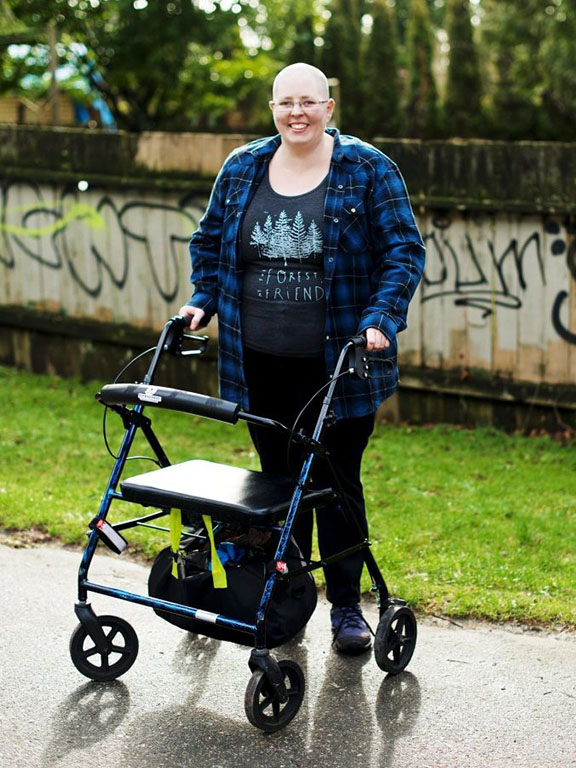
The Access Transit Committee succeeded in convincing TransLink to include audible stop announcements on transit, McCain adds, but didn’t manage to convince them to include information about whether the SkyTrain doors would be opening on the left or right for any given stop — a key detail for anyone attempting to get off a crowded SkyTrain using a mobility device.
In rural and suburban areas, sidewalk and crosswalk infrastructure will need to be greatly improved, routes will need to be significantly augmented, and stops will need to be frequent enough as well as physically accessible, to make transit viable as a transportation option. (Before you balk at the cost of installing extra kilometres of sidewalks with curb cuts, compare what your city spends on this infrastructure in comparison to road maintenance.)
What about intercity transit?
What if rural and intercity bus services were affordable, reliable and ran frequently? What if they were public services, rather than private enterprises — and what if, as public services, their funding model followed a virtuous cycle, rather than a vicious one?
In 2018, Greyhound announced it would cut all services in western Canada other than its Vancouver–Seattle route. It has since announced a permanent shutdown across Canada. While smaller private services still operate in parts of B.C., notably in high-tourist-traffic routes, many parts of northern and rural B.C. are extremely difficult to access or leave without a car.
Wilt points out that lack of reliable intercity transit tends to hit Indigenous and rural communities hardest, particularly targeting residents of these communities who are older, and who are disabled.
“It also is a major safety issue,” he adds. “As we saw on Highway 16, the Highway of Tears, people who don’t have a means of transportation will resort to hitchhiking or travelling with people who they don’t know, which can be extremely dangerous.”
In June 2017, the province launched bus services running along Highway 16, connecting Smithers to Witset and Burns Lake, Burns Lake and Prince George, and Terrace and the Hazeltons. Last year, the routes saw a ridership of about 1,500 people a month.
In September of that year, the CBC spoke with riders who were using the new routes to visit family and go to medical clinics. While everyone they spoke with appreciated the routes, one man who’d bussed to his medical appointment was later seen trying to hitch a ride — the route’s service frequency meant he’d need to wait a few hours to catch the bus, and he wanted to get home faster if he could.
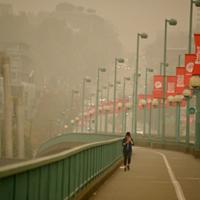
Can Metro Vancouver Prevent Thousands of Deaths from Air Pollution?
In short, even this welcome new service could better service its riders.
Speaking from experience as a carless and able-bodied and middle-class person who lives on the northern Sunshine Coast, figuring out how to get from point A to point B is often a confusing puzzle, involving ferries and a bike, or ferries and a taxi and a bus, or ferries and a five-kilometre walk or two. If you’re living in poverty, have a physical disability, or face any other similar barriers, what I find challenging could make leaving your town — or even your home — next to impossible.
It’s here where disability justice, poverty justice, racial justice and climate justice intersect.
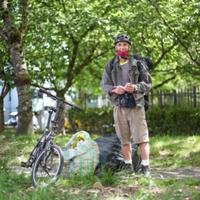
Welcome to Vancouver’s Underground Bicycle Economy
It’s all well and good to say that more people in B.C. should choose greener options over driving personal vehicles and flying — but if transit routes are inconvenient, unreliable and confusing for trip-planning, most people with the ability to drive or fly will choose to drive or fly instead. This leaves everyone who can’t make those choices out in the cold.
Well-funded public transit and intercity transit that is accessible and free to users at their point of service and that runs on a convenient schedule would, with some patience, fundamentally change riders’ relationships to transit. This would reduce greenhouse gas emissions, improve access to ferries during the busy summer months (if more people opted for transit over personal vehicles), and, most importantly, allow people who currently face significant barriers leaving their home communities for medical appointments, family visits and other things, like vacations, that improve quality of life, more freedom and mobility.
We won’t arrive at that destination without fundamental changes to the way many of us conceive of public transit. Getting there will require significant investment. Transit advocates like Viveca Ellis believe the time has come.
“We would like to shift from this notion of a transit user as a consumer and a customer, to a citizen that has a right to access mobility within their city, or town, or region,” she says. “Transit should not be commodified. Mobility is a universal need.”

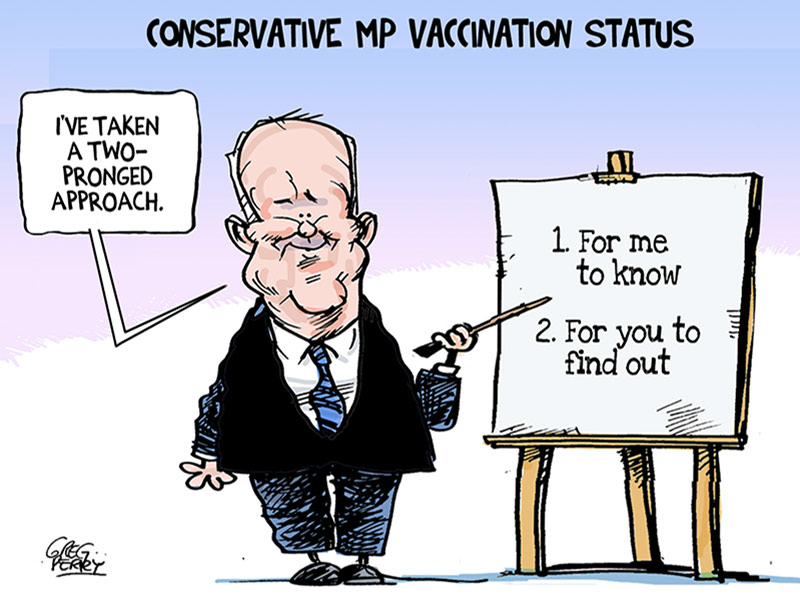 Cartoon by Greg Perry.
Cartoon by Greg Perry.